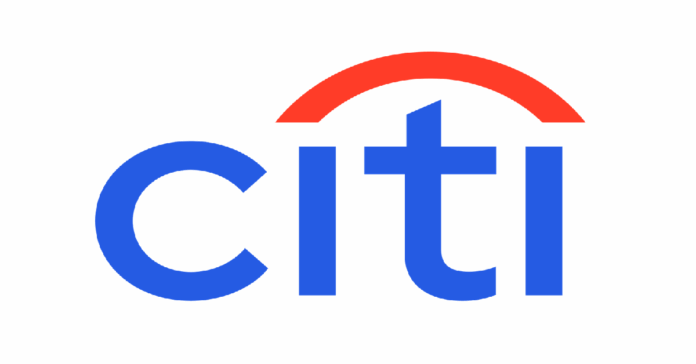NEW YORK, NY – July 5, 2025 – Citigroup Inc. (C), a titan in the global banking sector, is currently presenting a compelling investment opportunity, according to a recent in-depth valuation analysis. Despite facing challenges reflected in its profitability metrics, the bank’s stock, trading at $88.72 as of March 31, 2025, appears to be significantly undervalued, earning it a “Screaming Buy” classification from specialized financial models.
Valuation Models Point to Substantial Undervaluation
For financial services companies like Citigroup, traditional valuation methods like Free Cash Flow (FCF) are less applicable due to their unique operational structure, which includes significant regulatory capital and client funds. Instead, the Buffett-Inspired and McGrew Valuation Models, both utilizing “Distributable Earnings,” offer a more appropriate framework.
Distributable Earnings for financial firms are calculated by adding non-cash charges (such as Depreciation and Amortization) to Net Income and then subtracting any increase in required regulatory capital for growth. For the trailing 12 months (TTM) ending March 31, 2025, Citigroup’s Distributable Earnings amounted to $17.626 billion, derived from a Net Income of $13.375 billion and Depreciation and Amortization of $4.251 billion. Acknowledged as a limitation, the increase in regulatory capital was assumed to be zero due to the lack of explicit data.
Further analysis to determine Citigroup’s growth profile involved calculating the 3-5 year Compound Annual Growth Rate (CAGR) of Distributable Earnings from 2020 to 2023. This yielded a negative CAGR of approximately -2.01%. Consequently, Citigroup was classified as a “non-growth stock,” leading both valuation models to apply a conservative 3% constant growth rate for the initial ten years of projection.
An essential adjustment for financial services firms is the “Net Debt,” which accounts for restricted cash often used to offset client-related liabilities. As of March 31, 2025, Citigroup’s Net Debt was $36.492 billion, calculated by subtracting Cash and Cash Equivalents ($308.331 billion) from Total Debt ($344.823 billion). The absence of explicit restricted cash data for Q1 2025 led to the use of standard net debt, another noted limitation.
Buffett-Inspired and McGrew Models Align
Both the Buffett-Inspired and McGrew Valuation Methods project Distributable Earnings over a decade with a 3% growth rate, calculate a terminal value, and then discount all cash flows to their present value. Utilizing a discount rate of 8% (comprising a 4% Treasury yield and a 4% premium) and a 2.5% perpetual growth rate , the intrinsic value per share for Citigroup was calculated to be $152.90. Applying a 25% margin of safety, the target price for a secure investment stands at $114.68.
With Citigroup’s closing stock price at $88.72, the analysis reveals a striking 41.97% discount compared to its intrinsic value of $152.90. This significant difference places Citigroup firmly in the “Screaming Buy” category under both valuation methodologies, suggesting a substantial potential margin of safety for value investors. The consistent results from both models further reinforce confidence in this estimate, largely due to the conservative growth assumptions driven by Citigroup’s negative Distributable Earnings CAGR.
Profitability: A More Nuanced Picture
While the valuation signals a strong buy, Citigroup’s profitability metrics present a more nuanced view. Return on Equity (ROE), which gauges profitability relative to shareholders’ equity, was approximately 6.97% for the TTM period. This is considered modest when compared to leading banks, which often target ROE figures between 10-15%. This moderate ROE suggests that Citigroup faces challenges in generating high returns on equity, potentially due to its extensive global operations and regulatory burdens.
Similarly, Return on Tangible Assets (ROTA) and Return on Tangible Equity (ROTE) provide insights into profitability relative to asset utilization. For banks, ROTE is often the more relevant metric. Citigroup’s ROTA, using total assets, was a low 0.55% , typical for banks with large asset bases. More significantly, the ROTE, calculated using average net tangible assets, was approximately 7.20%. This ROTE figure aligns closely with the ROE, indicating moderate efficiency in utilizing tangible equity.
Investment Implications and Outlook
The valuation analysis strongly suggests that Citigroup is significantly undervalued, presenting a compelling opportunity for value investors. However, the modest ROE (6.97%) and ROTE (7.20%) highlight areas where Citigroup may not be maximizing shareholder value compared to its peers. These moderate returns could stem from operational inefficiencies, ongoing regulatory costs, or broader market headwinds.
Investors considering Citigroup should carefully weigh this significant undervaluation against the current profitability metrics. A crucial factor for potential investors will be whether management can effectively implement strategic initiatives, such as cost-cutting measures or divestitures, to enhance returns and improve these profitability ratios.
It is also important to acknowledge the limitations of this analysis. The lack of explicit data on increases in regulatory capital may have led to a slight overestimation of Distributable Earnings adjustments. Furthermore, the unavailability of restricted cash data for Q1 2025 necessitated the use of standard net debt, which could potentially overstate liabilities. Finally, the negative CAGR for Distributable Earnings, while justifying conservative growth assumptions, might overlook any future recovery potential for Citigroup.
Thus, Citigroup Inc. offers a fascinating and potentially lucrative opportunity for value investors, with a valuation analysis indicating significant undervaluation. While the “Screaming Buy” status is compelling, its modest ROE and ROTE suggest room for improvement in profitability. For those willing to accept moderate returns and potential risks, Citigroup could be a bargain, but careful consideration of its operational and regulatory environment is essential.

